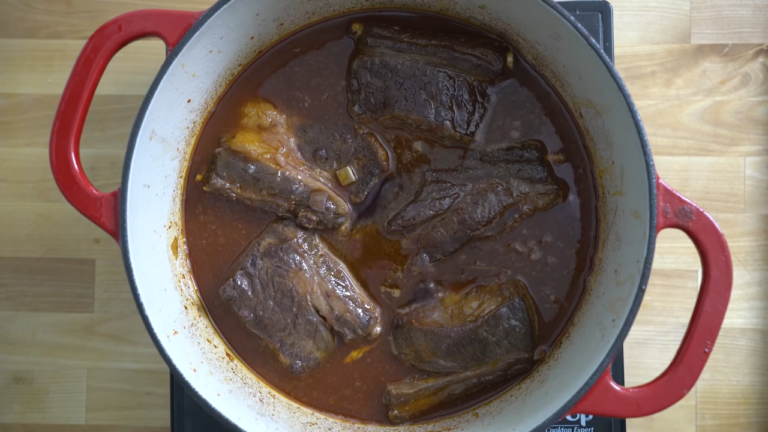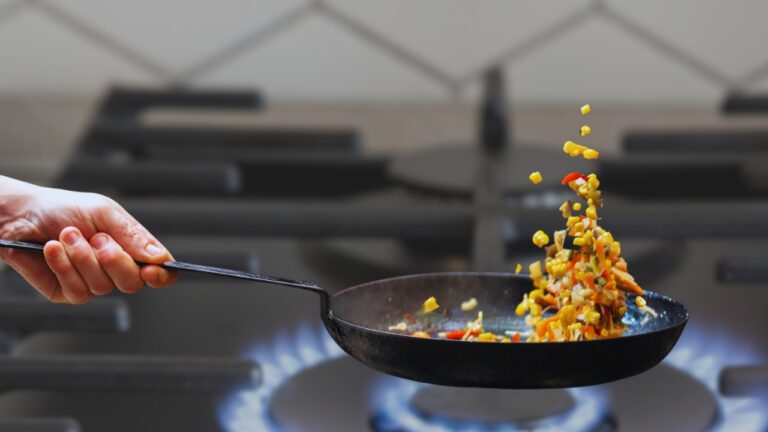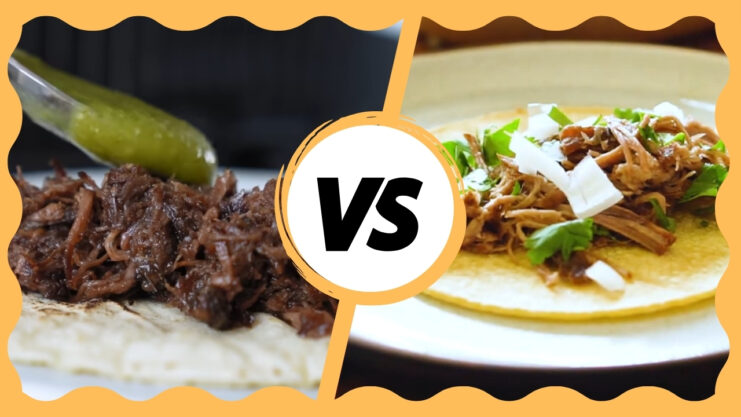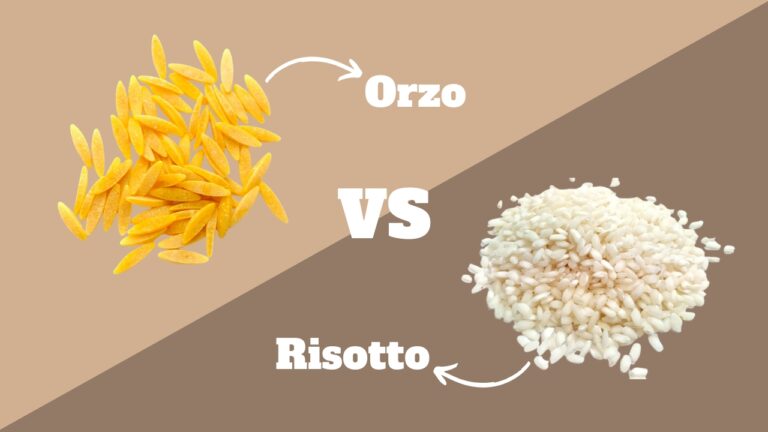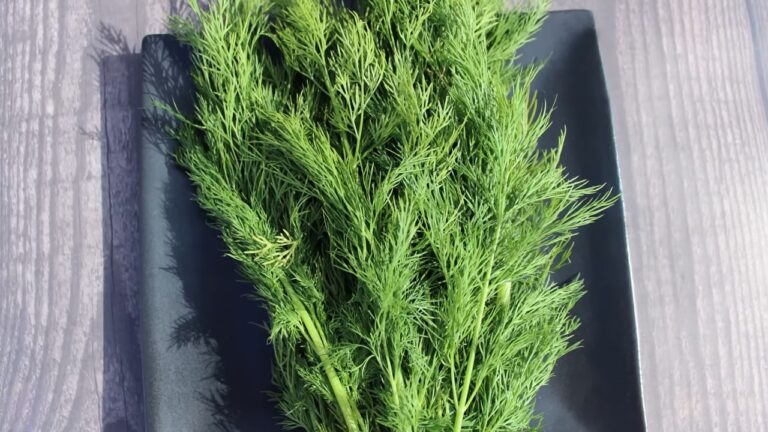Chipotle’s menu features 53 ingredients, offering endless possibilities for crafting a delicious meal.
You can choose from burritos, tacos, bowls, or salads, with options like chicken, steak, plant-based sofritas, and veggies with guacamole, and sometimes even carne asada for a limited period.
However, two other meat choices, carnitas, and barbacoa, might seem similar but are quite different.
Let’s explore how they are similar and what sets them apart.
Barbacoa vs Carnitas at Chipotle?
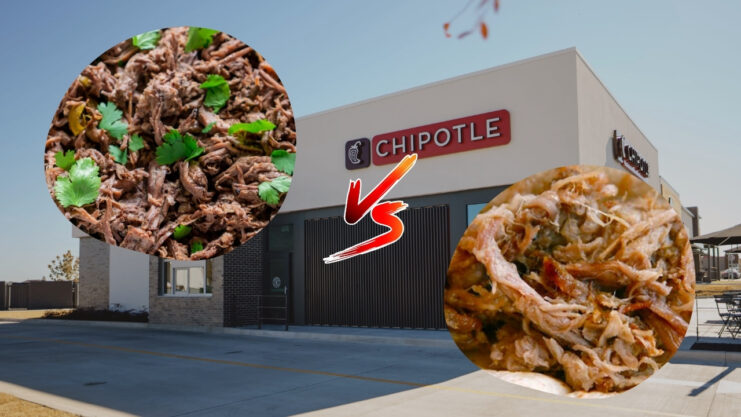
The key differences between Chipotle’s carnitas and barbacoa come from the types of meat and the unique spices and seasonings used.
Both are slowly braised and shredded, but carnitas are made from pork and have a sweeter taste, while barbacoa is made from beef and is spicier.
An unexpected ingredient in Chipotle’s carnitas is juniper berries. These berries are pungent, piney, and citrusy, pairing well with pork.
Typically, carnitas are made with orange juice, but juniper berries provide a similar acidic touch and add complexity.
On the other hand, Chipotle’s barbacoa uses more traditional Mexican herbs and spices but includes some surprises like chili peppers and cloves.
Cloves, which are sweet and slightly bitter, add a bit of heat similar to cinnamon and complement the savory spices that flavor the tender beef.
Exploring the Flavors in Chipotle’s Carnitas
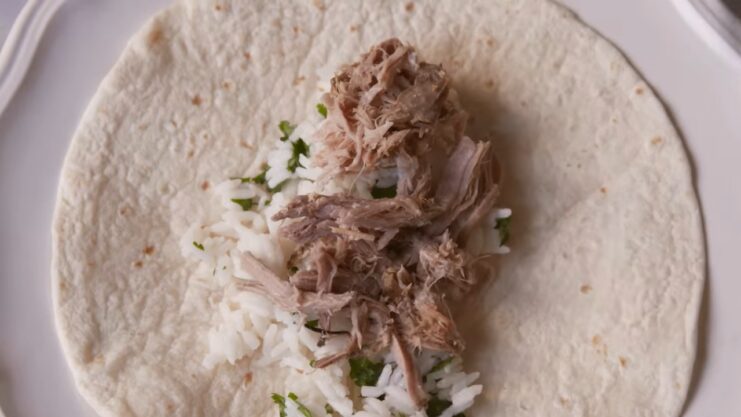
The primary flavors in Chipotle’s carnitas come from dried and crushed juniper berries and thyme.
Thyme, a key aromatic herb in Mexican cuisine, adds notes of lemon and mint to the pork. It’s one of the main “hierbas de olor” used in Mexican dishes to enhance soups, stews, and meats.
Alongside thyme, bay leaves also subtly enhance the dish.
The only other ingredients are black pepper, kosher salt, and the oil used for cooking.
Traditionally, “carnitas” means “little meats” in Spanish, and they have been historically cooked in pork fat lard to enrich the pork flavor and give the meat a crispy finish.
However, Chipotle opts for sunflower oil instead of lard, choosing it for its milder flavor profile which suits certain dishes better.
Interestingly, Chipotle’s carnitas don’t contain chilis, making them a great option for those who enjoy flavorful but not too spicy meat.
How They Make Barbacoa So Tender
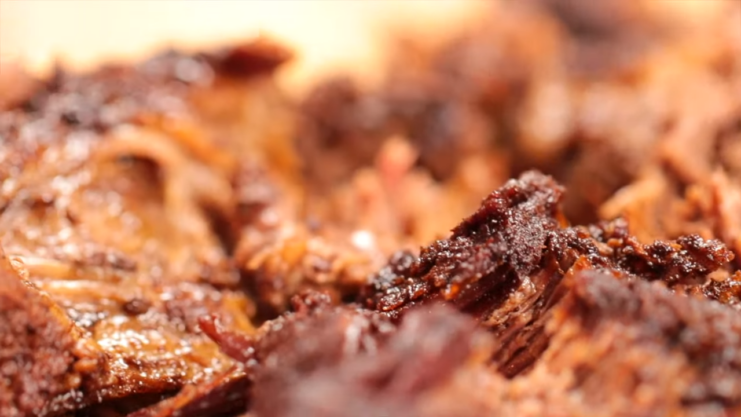
Chipotle’s beef barbacoa is incredibly tender, and there’s a specific process they follow to achieve this.
The term “barbacoa” traditionally refers to meat cooked slowly over an open fire or in a pit, often wrapped in agave or banana leaves.
While modern methods have evolved, Chipotle opts to cook its beef sous vide for a long time before marinating it for half a day in a spicy adobo blend and then braising it.
This technique ensures the meat remains juicy and tender even after such extensive cooking.
For cooking, unlike the carnitas which use sunflower oil, the barbacoa (along with other Chipotle meats, rice, and salad dressing) is prepared using rice bran oil.
This oil is preferred for its mild flavor and high heat tolerance, ideal for grilling.
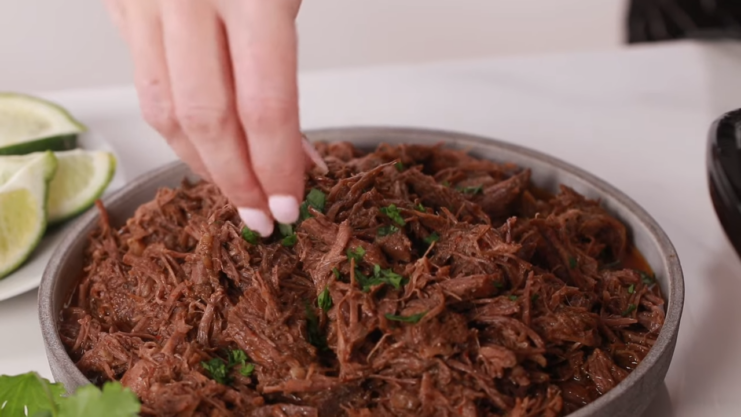
In terms of seasoning, Chipotle’s barbacoa shares bay leaves, salt, and pepper with the carnitas but includes a more robust mix of spices like oregano, cumin, garlic, chilis, and cloves.
If you’re aiming to infuse a rich, smoky flavor into your grilling, mastering the use of a charcoal chimney starter can elevate your barbecue experience, ensuring even heat distribution and optimal charcoal ignition.
A key ingredient is chipotle peppers, smoked over pecan wood, adding a distinctive smoky flavor. Chipotle has sourced these peppers from Javier Fierro’s farm in Chihuahua, Mexico, for over 15 years, ensuring an authentic flavor profile.




